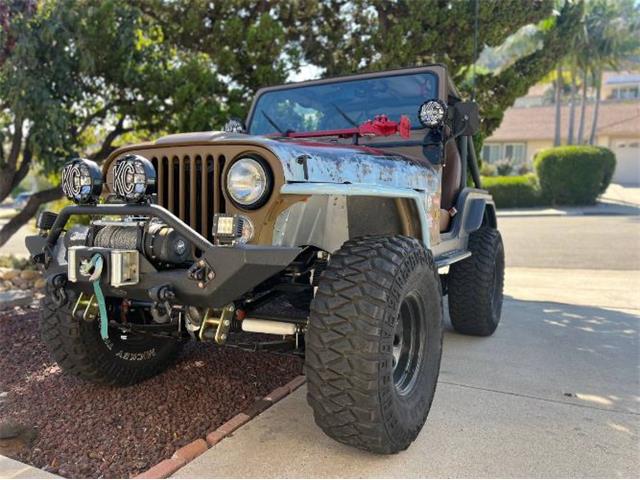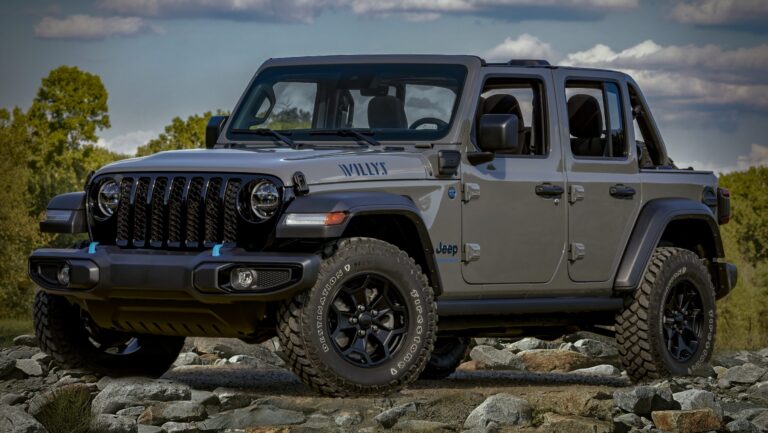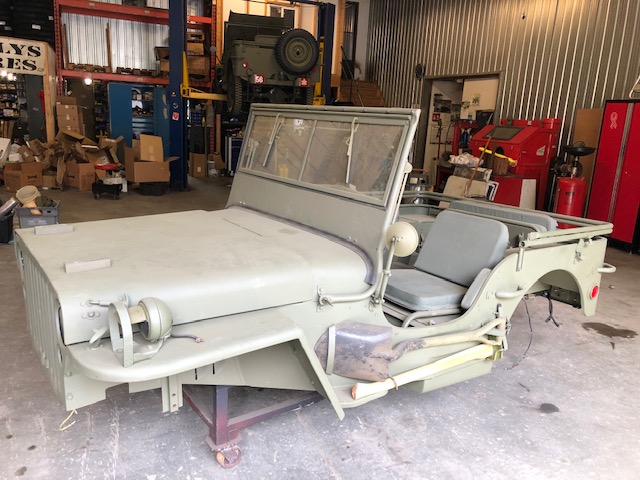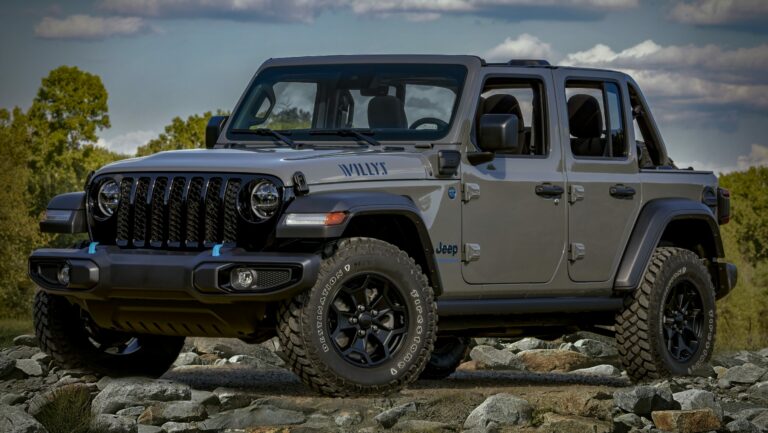1978 Jeep For Sale: Unearthing a Timeless American Icon
1978 Jeep For Sale: Unearthing a Timeless American Icon jeeps.truckstrend.com
In a world increasingly dominated by sleek, digital, and often disposable vehicles, the allure of the past shines ever brighter. Among the most cherished relics of automotive history, the 1978 Jeep stands as a rugged testament to a bygone era of raw capability, straightforward design, and undeniable American spirit. To encounter a "1978 Jeep for sale" isn’t merely to find a used car; it’s to discover a piece of living history, a potential adventure waiting to unfold, and a ticket into a passionate community of enthusiasts. This article serves as a comprehensive guide for anyone considering the acquisition of a 1978 Jeep, exploring its enduring appeal, what to look for, and how to navigate the exciting journey of ownership.
The Enduring Legacy of the 1978 Jeep
1978 Jeep For Sale: Unearthing a Timeless American Icon
The year 1978 was a pivotal moment for Jeep, then under the ownership of American Motors Corporation (AMC). It represented a sweet spot where the brand’s legendary off-road prowess met a growing demand for more comfortable and versatile utility vehicles. The 1978 lineup offered a diverse range of models, each with its own character and purpose, yet all sharing the fundamental Jeep DNA of ruggedness and capability.
Key Models of 1978:
- Jeep CJ-5 & CJ-7: These are perhaps the most iconic and recognizable 1978 Jeeps. The CJ-5, with its shorter wheelbase, was the direct descendant of the original military Jeeps, known for its nimbleness on tight trails. The CJ-7, introduced in 1976, offered a longer wheelbase, providing better on-road stability, more interior room, and easier access to the rear seats, making it a more versatile choice for many. Both models featured removable doors, fold-down windshields, and soft or hardtop options, embodying the quintessential open-air Jeep experience. Engine options typically included the AMC 258 cubic inch (4.2L) inline-six and the AMC 304 cubic inch (5.0L) V8, paired with manual or automatic transmissions.
- Jeep Wagoneer (SJ): The full-size Wagoneer in 1978 was a pioneer in the luxury SUV segment, long before the term even existed. Known for its comfortable ride, spacious interior, and surprisingly capable Quadra-Trac full-time four-wheel-drive system, the Wagoneer offered a blend of utility and refinement. It was often powered by the robust AMC 360 cubic inch (5.9L) V8. Its classic styling, particularly the "woodgrain" side paneling on certain trims, has made it a highly sought-after classic today.
- Jeep Cherokee (SJ): Essentially a two-door (or rarely, four-door) sportier version of the Wagoneer, the Cherokee in 1978 retained much of its sibling’s capability but targeted a younger, more adventurous demographic. It shared many mechanical components with the Wagoneer, including engine options and drivetrain choices, making it a powerful and stylish off-roader.
- Jeep J-Series Pickups (J-10 & J-20): These full-size pickups shared their platform with the Wagoneer/Cherokee and were known for their heavy-duty capabilities. The J-10 was a half-ton, while the J-20 was a three-quarter-ton, designed for more serious hauling and towing. They offered the same powerful AMC V8 engines and durable drivetrains, making them popular workhorses and, increasingly, desirable classic trucks.
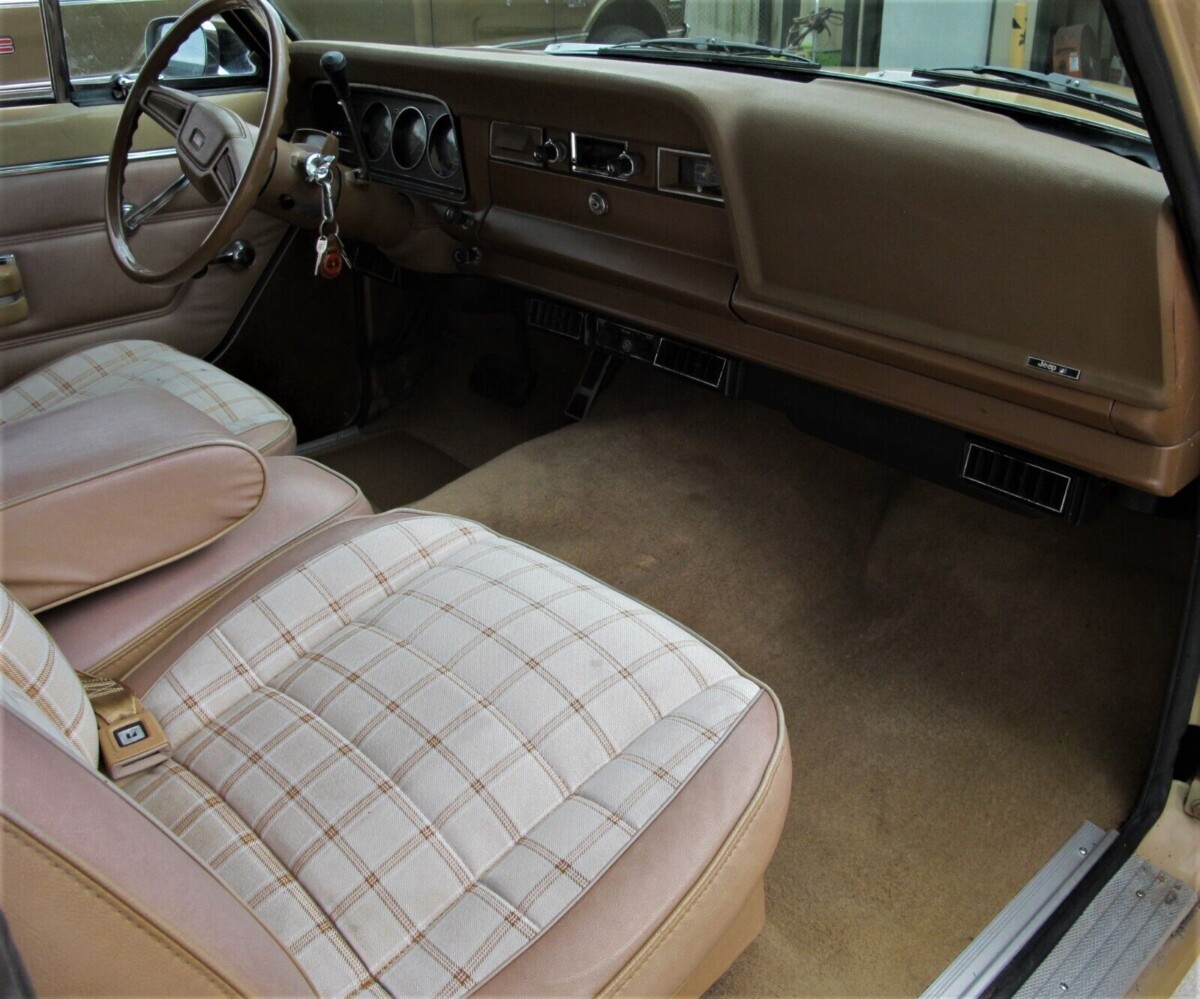
The 1978 models were characterized by their robust, body-on-frame construction, solid axles, and relatively simple mechanical systems, making them highly durable and surprisingly easy to work on for the mechanically inclined.
Why Buy a 1978 Jeep Today?
The appeal of a 1978 Jeep goes far beyond mere transportation. It’s an investment in character, capability, and a unique lifestyle.
- Classic Appeal & Investment Potential: Vintage vehicles, especially iconic ones like the Jeep, are appreciating assets. A well-maintained or properly restored 1978 Jeep can hold or even increase in value over time, offering a tangible return on your passion.
- Rugged Durability & Simplicity: These vehicles were built for tough use. Their mechanical simplicity means fewer complex electronics to fail and often easier, less expensive repairs compared to modern vehicles. They are designed to be repaired, not just replaced.
- Unmatched Off-Road Prowess: The legendary Jeep capability is inherent in these models. With robust 4×4 systems, solid axles, and ample ground clearance, a 1978 Jeep can conquer trails that would leave many modern SUVs stranded.
- Customization Potential: A 1978 Jeep is a blank canvas for personalization. From lift kits and larger tires to engine swaps, interior upgrades, and custom paint jobs, the aftermarket support is vast, allowing owners to tailor their vehicle to their exact specifications and adventurous needs.
- Nostalgia & Community: Owning a 1978 Jeep connects you to a rich history and an incredibly vibrant, supportive community of enthusiasts. Whether online forums, local clubs, or national events, you’ll find a welcoming network eager to share knowledge, parts, and trail experiences. It’s more than just a vehicle; it’s a shared passion.
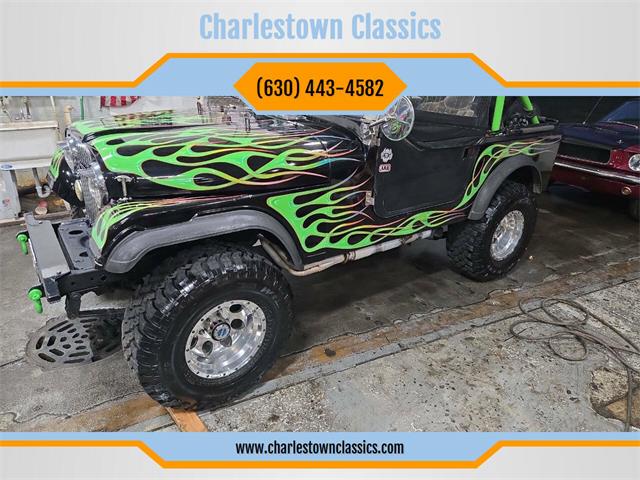
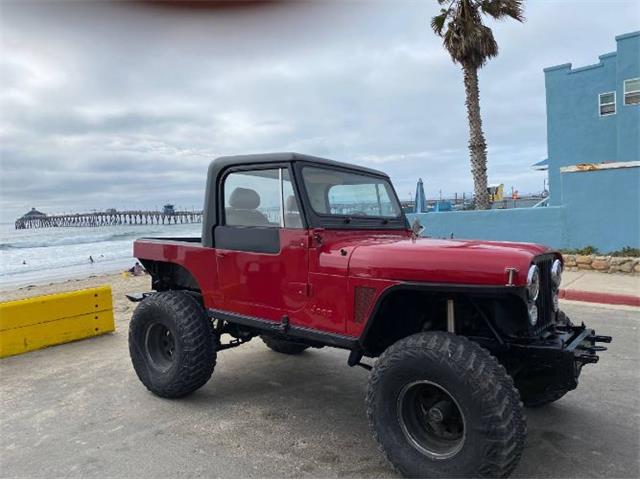
Navigating the 1978 Jeep Market: What to Look For
When considering a "1978 Jeep for sale," a thorough inspection is paramount. These vehicles are over four decades old, and their condition can vary wildly.
- Rust, Rust, Rust: This is the absolute biggest enemy of vintage Jeeps. Pay meticulous attention to:
- Frame: Check the entire frame for cracks, bends, and especially rust perforation, particularly near body mounts, spring hangers, and behind the wheels.
- Body Tub (CJ models): Floorboards (especially under the seats and pedals), rear cargo area, and body mounts are notorious rust traps.
- Fenders & Rocker Panels: Look for bubbling paint, holes, and bondo patches.
- Wagoneer/Cherokee/J-Series: Tailgate, lower door sills, wheel wells, and roof gutters are common areas.
- Engine & Drivetrain:
- Leaks: Look for oil, coolant, or transmission fluid leaks.
- Noises: Listen for unusual engine knocking, ticking, or grinding from the transmission or axles.
- Performance: Check for smooth acceleration, proper shifting (both manual and automatic), and functional 4×4 engagement (low range, high range).
- Oil pressure: Ensure it’s healthy when warm.
- Electrical System: Often a weak point due to age. Test all lights (headlights, tail lights, turn signals, brake lights), gauges, wipers, heater/AC (if equipped), and radio.
- Suspension & Steering: Check for worn out bushings, tie rods, ball joints, and leaf springs. Excessive play in the steering wheel indicates worn steering components.
- Brakes: Ensure firm pedal feel and effective stopping power. Check for worn pads/shoes and rusty brake lines.
- Interior Condition: Assess the seats for tears, dashboard for cracks, and all controls for functionality. Missing or broken interior components can be costly to replace.
- Documentation: A clear title is essential. Any service records or history of previous ownership can provide valuable insights into the vehicle’s past.
- Originality vs. Modified: Decide if you prefer a stock vehicle for restoration or a modified one for immediate trail use. Both have their pros and cons.
The Buying Process: Practical Advice and Actionable Insights
Acquiring a 1978 Jeep requires more than just money; it demands patience, research, and a clear understanding of your goals.
- Set a Realistic Budget: The purchase price is just the beginning. Factor in potential restoration costs, immediate repairs, insurance, and ongoing maintenance. A "cheap" Jeep can quickly become a money pit if it requires extensive work.
- Research & Identify Your Needs:
- Model Choice: Do you want a nimble CJ-5, a more comfortable CJ-7, a luxurious Wagoneer, or a heavy-duty J-Series pickup?
- Intended Use: Will it be a daily driver, a weekend trail rig, a show vehicle, or a restoration project? This will significantly influence the condition you should target.
- Where to Find Them:
- Online Marketplaces: Craigslist, eBay, Facebook Marketplace are good starting points.
- Specialized Auction Sites: Bring a Trailer and Hemmings often feature higher-quality, well-documented examples.
- Classic Car Dealers: May offer more peace of mind with inspected vehicles, but often at a higher price.
- Jeep Forums & Clubs: Enthusiast communities are excellent places to find well-cared-for vehicles.
- Local Classifieds & Word-of-Mouth: Sometimes the best deals are found offline.
- Pre-Purchase Inspection (PPI): This is non-negotiable. If you’re not an expert, hire a reputable mechanic specializing in vintage 4x4s or bring a knowledgeable friend. A PPI can uncover hidden issues and save you thousands in future repairs.
- Negotiation Tips: Be prepared to negotiate. Know the market value for the specific model and condition. Don’t be afraid to walk away if the price isn’t right or if the seller is unwilling to address concerns.
- Post-Purchase Considerations:
- Insurance: Look into classic car insurance providers; they often offer better rates and specialized coverage for vintage vehicles.
- Registration: Understand your local DMV requirements for registering older vehicles.
- Immediate Maintenance: Even if it runs, plan for basic fluid changes, tune-ups, and a thorough inspection by your trusted mechanic.
Restoration, Maintenance, and Ownership
Owning a 1978 Jeep is a journey, not just a destination. It requires ongoing care, but the rewards are immense.
- DIY vs. Professional Restoration: Decide how much work you’re willing and able to do yourself. Many owners enjoy the hands-on aspect, while others prefer to entrust significant work to specialists.
- Parts Availability: For CJ models, parts availability is generally excellent, with a thriving aftermarket supplying everything from replacement body tubs to upgraded components. Wagoneer, Cherokee, and J-Series parts can be a bit more challenging for certain trim-specific items, but mechanical components are largely shared and available.
- Common Upgrades: Many owners opt for modernizing certain aspects. Popular upgrades include fuel injection conversions (for better reliability and fuel economy), power steering and brake upgrades, suspension lift kits, larger tires, and upgraded audio systems.
- Community & Resources: Leverage online forums (e.g., JeepForum, IH8MUD for Wagoneers/Cherokees), local Jeep clubs, and service manuals. These resources are invaluable for troubleshooting, finding parts, and sharing experiences.
1978 Jeep Estimated Price Guide
Please note: Prices for vintage Jeeps vary significantly based on condition, originality, mileage, geographic location, and specific modifications. This table provides a general range. "Excellent/Show" refers to concours-level restorations or exceptionally preserved original examples.
| Model | Condition: Poor/Parts (USD) | Condition: Fair/Driver (USD) | Condition: Good/Restored (USD) | Condition: Excellent/Show (USD) |
|---|---|---|---|---|
| Jeep CJ-5 | $2,000 – $5,000 | $6,000 – $15,000 | $16,000 – $30,000 | $30,000 – $50,000+ |
| Jeep CJ-7 | $2,500 – $6,000 | $7,000 – $18,000 | $19,000 – $35,000 | $35,000 – $60,000+ |
| Jeep Wagoneer | $3,000 – $7,000 | $8,000 – $20,000 | $22,000 – $45,000 | $45,000 – $80,000+ |
| Jeep Cherokee | $2,500 – $6,000 | $7,000 – $18,000 | $19,000 – $40,000 | $40,000 – $75,000+ |
| Jeep J-10/J-20 | $2,000 – $5,000 | $6,000 – $16,000 | $17,000 – $35,000 | $35,000 – $65,000+ |
Prices are estimates and can fluctuate based on market demand, engine/transmission options, and specific trim levels (e.g., Golden Eagle CJ, Limited Wagoneer).
Frequently Asked Questions (FAQ)
Q: Are 1978 Jeeps reliable as daily drivers?
A: They can be, but often require significant investment in restoration and ongoing maintenance to be truly reliable for daily use. They are old vehicles and will never offer the same reliability as a modern car. Many owners prefer them as weekend drivers or project vehicles.
Q: What’s the main difference between a 1978 CJ-5 and a CJ-7?
A: The CJ-7 has a 10-inch longer wheelbase (93.5 inches vs. 83.5 inches for the CJ-5). This translates to more stable on-road handling, more rear legroom, and easier access to the back seat due to a wider door opening. The CJ-5 is more nimble on very tight trails.
Q: Are parts hard to find for a 1978 Jeep?
A: Generally, no, especially for CJ models. The aftermarket is robust, and many mechanical components are shared with other AMC vehicles of the era. Some specific trim or body parts for Wagoneers/Cherokees/J-Series can be harder to source but are usually available from specialized suppliers or used parts dealers.
Q: What are the most common rust spots on these Jeeps?
A: For CJs: frame rails (especially near body mounts and spring hangers), floorboards, rear quarter panels, and the body tub itself. For Wagoneers/Cherokees/J-Series: rocker panels, lower door sills, wheel wells, tailgate, and the areas around the headlights/grille.
Q: What kind of fuel do these older Jeeps use?
A: Most 1978 Jeeps were designed to run on leaded regular gasoline. Today, they run fine on regular unleaded (87 octane). If the engine has been extensively rebuilt, some owners might opt for higher octane or fuel additives, but it’s generally not necessary unless specified by the builder. Ethanol in modern fuels can be a concern for older fuel lines and rubber components, so it’s wise to inspect and potentially replace these parts if they haven’t been updated.
Conclusion
The pursuit of a "1978 Jeep for sale" is more than a simple transaction; it’s the beginning of an exciting journey. Whether you dream of a rugged trail machine, a meticulously restored classic, or a unique daily driver, a 1978 Jeep offers an unparalleled blend of history, capability, and character. It demands respect, patience, and a willingness to get your hands dirty, but in return, it offers an authentic driving experience and a connection to a passionate community that few modern vehicles can rival. Owning a 1978 Jeep isn’t just about driving; it’s about living a piece of the American legend, one adventure at a time.
